I am posting the information in this thread due to the widespread misconceptions related to the topic of Japanese Morning Glories and to a lesser extent Morning Glories in general...
This post is not intended as something to read quickly early in the morning over a quick cup of coffee before you rush out of the door...it is constructed for due consideration by those who have expressed an interest to learn more about the topic as certain important details are often elusive and / or misunderstood...
Japanese Morning Glories and how to tell if a purported Japanese Morning Glory is the real McCoy or not...
The 1st question that must be presented and addressed is the title of this thread and that is
"What is a Real Japanese Morning Glory"
The Japanese have been selectively breeding many different species(!) in the Morning Glory Family of Convolvulaceae for many centuries...
The most common species associated with the term 'Japanese Morning Glory' is Ipomoea nil which originated in the tropics of the New World, most likely South America and this species seems to have reached Japan from China...it is not known exactly how Ipomoea nil first reached China...although it has been speculated that I.nil may have traveled the same routes as Ipomoea batatas did in reaching the South Pacific Islands during Pre-Columbian time periods...
http://en.wikipedia.org/wiki/Pre-Columbian.
Ipomoea nil the legitimate binomial for a distinct species.although the misleading illegitimate epithet of imperialis can still be seen in usage...there is no legitimate species of Ipomoea 'imperialis'...the imperialis term is a non-scientific term used to refer to a japanese morning glory most usually the large flowered Ipomoea nil,but has also been used as a very fuzzy term to describe 'japanese' morning glories of uncertain parentage...
So,what then is a Japanese Morning Glory ?
A Japanese Morning Glory could potentially be any of the various species and cultivars associated with Japan,but there really is no ultra-specific entity that is A Real Japanese Morning Glory.
I think it is more accurate to refer to the various species of Morning Glories (e.g., I.nil, Ipomoea purpurea) that originated in Japan as selections and perhaps culti-varieties as a Japanese Style of Morning Glory.
The topic of trying to keep a particular cultivar or line of Morning Glories to remain true to the important characteristics of the parent stock is closely linked to the 'idea' of a real japanese morning glory and ideally it is certainly better to implement hand pollination with strict controls so that any seeds produced are most definitely from the selected parents...
Strict hand pollination with various degrees of associated strict controls to prevent unwanted fertilizations is definitely often used in maintaining pre-existing lineage control and in the intentional creation of Morning Glories with new / novel characteristics...but,the largest distributors in Japan (i.e., Takii and Sakata) produce their crops in large open pollinated environments...and many (if not most) smaller growers in Japan also distribute seeds from open pollinated plants and reserve hand pollination with strict controls only for special plants...
The seed packages that are directly from Japan are open pollinated...and if the rate of naturally occurring mutations is added in (usually about % to 25%) which can vary with the particular line,then all factors considered,there is a very good chance of getting a plant with characteristics that differ considerably from the description or the package pictorials...even if the seeds are from the packages directly from Japan.
Japanese package pictorials are commonly exaggerated...just like they are anywhere else in the marketing world...
My experience with some of the Japanese style of Morning Glories is that the relatively few growers in the USA who are relatively serious about trying to provide a high quality product are at least as likely to provide a real Japanese style of Morning Glory as you are likely to get from a sealed package of seeds directly from Japan...and sometimes the quality control of the seeds from the USA growers is better than what could be expected from a commercial packet directly from Japan.
I have spoken directly to the 'staff botanists' of the large US distributors and they did not know very much at all about Morning Glories...e.g., did not know how to differentiate between completely different species or to make a serious determination as to what the company was actually offering...you cannot realistically expect that retailers who purchase in large quantities from wholesalers will know much more than their suppliers...
I have been able to get some product batches of large distributors that were mis-identified corrected,but with difficulty...and I rarely waste my time with pursuing this anymore...frankly,it's like talking to a brickwall...
Merchants who are active participants on the Forums where the details of various Morning Glories are openly discussed are realistically much more likely to know about Morning Glories than those Merchants who intentionally or unintentionally distance themselves from the Forums...seeds from these merchants are much more likely to match photos displayed than photos from merchants who are not MG enthusiasts.
Merchants who are not active participants in the Morning Glory discussions are not likely to realistically know much about Morning Glories as a non-monetary interest or to realistically know what it is that they are offering...consider the motivation as a serious part of the source and of any information...people generally simply repeat what they are told and pass the buck if there is a problem...and enthusiasts who purchase just for the fun of it,but also do not really know about Morning Glories compound the potential difficulties encountered...
The merchants that to the best of my ability to determine, who are knowledgeable about Morning Glories do not have 'ad extensions' that attack other merchants directly or indirectly...the ones who cast the first stones seem to consistently forget about the wise saying about people who live in glass houses...'stone throwing' is okay as long as the person is on the pitching side,but if they are getting some criticism back...then all of a sudden they don't care for the stone throwing and it's a terrible crime and so on and so forth...
Merchants who are not particularly knowledgeable about their product often get 'huffy' if they are called on what it is that they offer and / or purport to know...deriding enthusiasts who have a sincere interest to enjoy a more accurate or indepth knowledge of what it is that they enjoy growing...
The majority of Morning Glories are relatively open pollinated stable,but there is definitely an appreciable chance of cross fertilization...
The Japanese Style of Morning Glories are in some cases the result of certain unintentional crossings and mutations,but some of the best are the result of intentional crossings by knowledgeable enthusiasts...and the same situation applies to Morning Glories being grown out anywhere else,including the USA...
I strongly recommend to those persons interested enough in Morning Glories to:
Learn how to properly identify the 4 most common species before you try to become a cultivar 'afficionado'...
Learning how to tell the 4 most common species by using the very obvious and easy sepal Key and seedpod characteristics would contribute greatly to eliminating much of the confusion surrounding Morning Glories....a relatively tiny amount of accurate education would go a very long way on this matter...
The 4 most commonly grown Morning Glory species are:
Ipomoea nil,Ipomoea purpurea,Ipomoea tricolor and less commonly Ipomoea hederacea and each of these has significant differences in the sepals and seedpods...
Ipomoea nil has elongated sepals that do not curve at the tips and the seedpods remain erect pointed upwards
http://davesgarden.com/guides/pf/showimage/55120/
http://davesgarden.com/guides/pf/showimage/124448/
Ipomoea nil seedpods remain erect...
http://davesgarden.com/guides/pf/showimage/113380/
Ipomoea hederacea has sepals that are similar to Ipomoea nil but the sepal tips and/or upper sepal section will at some point curve backwards
http://davesgarden.com/guides/pf/showimage/125101/
http://davesgarden.com/guides/pf/showimage/125102/
Ipomoea hederacea seedpods remain erect
http://davesgarden.com/guides/pf/showimage/125102/
Ipomoea purpurea sepals usually relatively short and wide at base...
http://davesgarden.com/guides/pf/showimage/146083/
Ipomoea purpurea seedpods always reflex to point towards the ground very shortly after fertilization
http://davesgarden.com/guides/pf/showimage/132998/
http://davesgarden.com/guides/pf/showimage/31407/
Ipomoea tricolor sepals are short and remain flush up against the capsule...the plant has no hair anywhere on the plant...the seedpods remain erect on healthy tissue...
http://davesgarden.com/guides/pf/showimage/106781/
http://davesgarden.com/guides/pf/showimage/139616/
I hope that the information contained in this thread will help to educate that population of people who are particularly interested to enjoy growing various Morning Glories and to enjoy learning about them in the process...
Thank you for your interest...
Ron

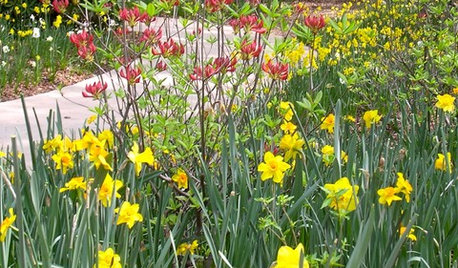






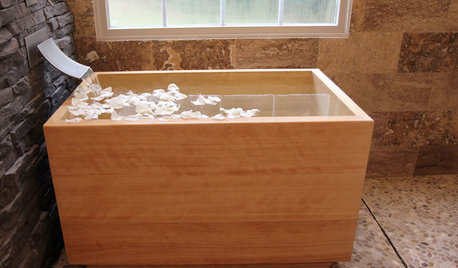
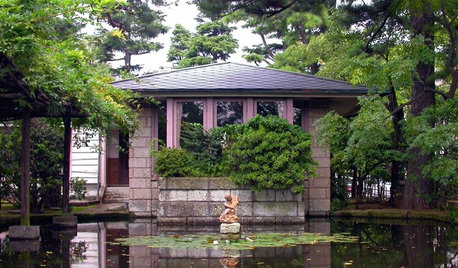


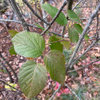

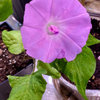
suseart